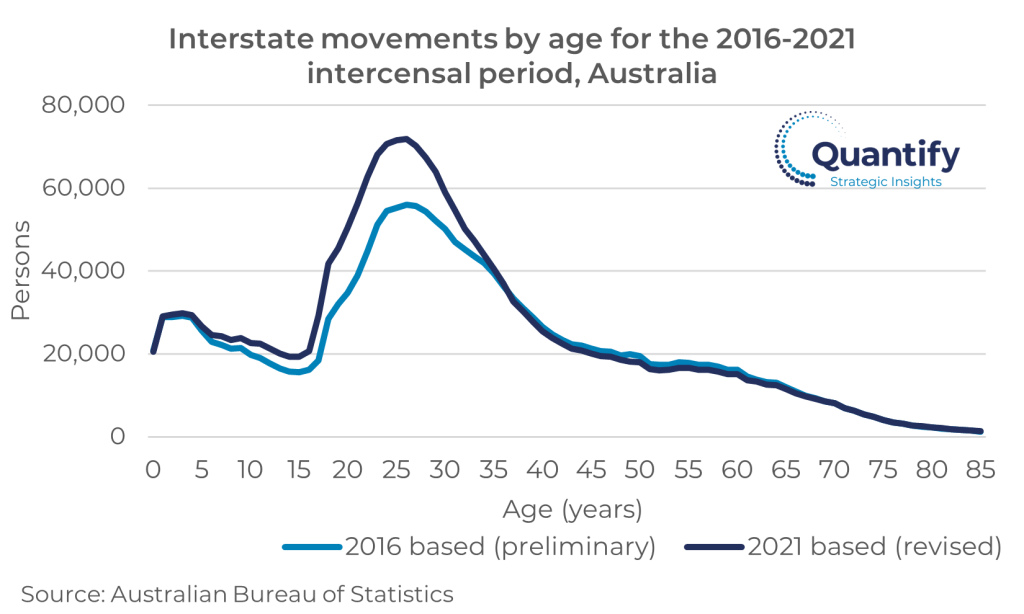The ABS has released final rebased population estimates for June 2021 based on the 2021 Census.
The final rebased population estimate draws together all outstanding population data available since the preliminary estimates were published to lock in a final population number in June 2021.
The release also revised Net Interstate Migration (NIM) data as part of its five-yearly review of the net interstate migration model used in calculating estimated resident population. The review of the model also sets assumptions for estimating NIM going forward until the 2026 Census.
There were wide variances across the states between the preliminary (2016 Census based) and revised (2021 Census based) estimates of NIM. Outflows from New South Wales and Victoria were revised upwards, while the revisions to net interstate migration into all other states and territories showed improvement:
- NIM flows for New South Wales and Victoria over June 2016 to June 2022 were revised downward by 18,030 and 35,180 respectively, with an aggregate net inflow from Victoria in this period revised to a net outflow.
- Although there were year-to-year variations, aggregate NIM for Queensland over 2016-2022 was largely unchanged.
Revised NIM for South Australia and Northern Territory indicated improvement in the net outflow estimate of 5,671 and 7,886 respectively, while Tasmania’s net inflow was upgraded by 5,487. - Previously estimated aggregate net outflows over 2016-2022 from Western Australia and Australian Capital Territory were revised upward by 18,482 and 15,488 respectively to net inflows.
Total movements were also revised upwards. A comparison of preliminary and revised NIM between June 2016 and June 2022 indicates an additional 260,000 interstate movers over the six-year period (2.38 million using 2016-based modelling vs 2.64 million using 2021-based modelling). This variation has largely been concentrated in the under 35-year-old age cohorts, indicating younger adults and families (see chart).
These changes to the NIM estimates go a long way to explaining the intercensal difference, with the rebased population in June 2021 showing lower populations in NSW and VIC, limited changes to the QLD population, and upgrades to the populations of SA, WA, TAS, NT and ACT. From a housing market perspective, they also help to explain the relative performance of their capital city residential markets during and subsequent to the COVID pandemic lockdowns.
Importantly, these revisions provide new benchmarks in setting assumptions for interstate migration for the purposes of undertaking state-based population forecasts. If you are in need of up-to-date population forecasts based on the latest available data, contact Rob (rob.burgess@quantifysi.com.au) or Angie (angie.zigomanis@quantifysi.com.au) at Quantify Strategic Insights.


